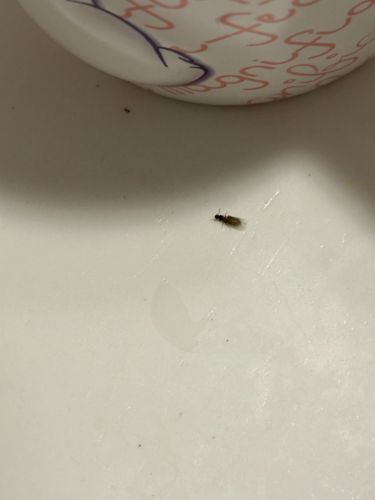Termite
Scientific Name: Reticulitermes spp. (likely, common subterranean termite)
Order & Family: Isoptera (now often considered part of Blattodea); various families including Rhinotermitidae, Kalotermitidae, Termitidae
Size: Workers and soldiers are typically 3-10 mm (0.1-0.4 inches) long. Reproductives (swarmers) can be larger, up to 15 mm (0.6 inches), including their wings.

Natural Habitat
Termites live in diverse habitats globally, ranging from tropical rainforests to temperate grasslands and arid deserts. They build nests in soil, wood, or within trees. Subterranean termites, like the one likely pictured, require contact with soil to maintain moisture and build mud tubes to access food sources above ground.
Diet & Feeding
Termites primarily feed on cellulose, which is found in wood, dead plants, leaves, and soil. Some species also feed on fungi grown in their nests or even animal feces.
Behavior Patterns
Termites live in highly organized colonies that can range from a few hundred to several million individuals. They are social insects, dividing labor among castes: workers, soldiers, and reproductives (including the king and queen). Workers are responsible for foraging for food, building and maintaining the nest, and caring for the young. Soldiers protect the colony from predators, primarily ants. Reproductives ensure the continuation of the colony, with the queen laying eggs. Swarmers are winged reproductives that leave the colony to establish new ones.
Risks & Benefits
Risks: Termites are significant structural pests, causing billions of dollars in damage annually to homes, buildings, and wooden structures. They can silently destroy foundations, walls, and furniture. Benefits: In natural ecosystems, termites are beneficial decomposers, breaking down dead wood and plant matter, thus returning nutrients to the soil. Their tunneling activities also aerate and improve soil structure.
Identified on: 8/9/2025